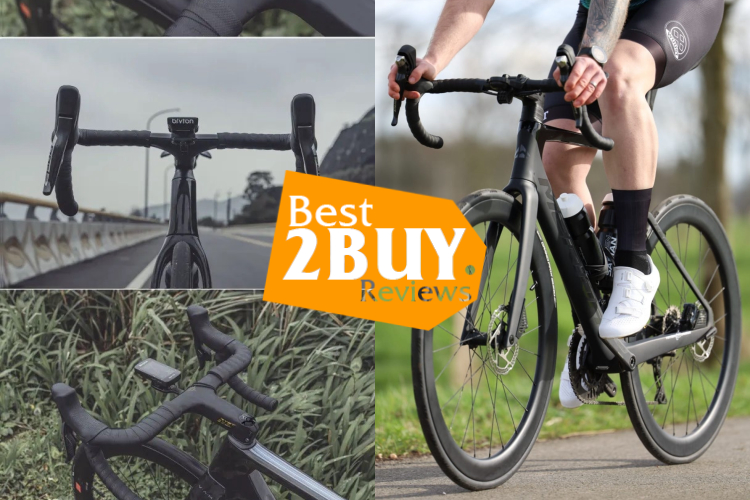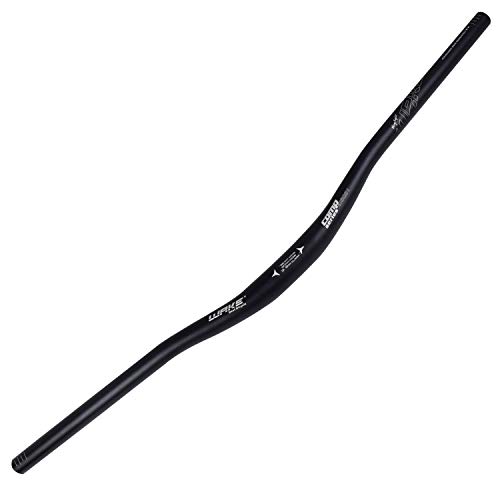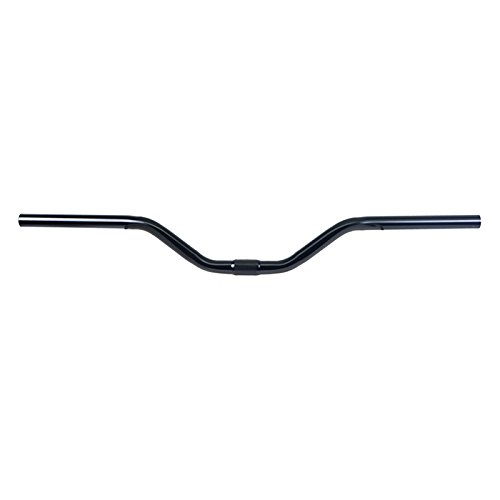Exploring the World of Bike Handlebars: A Comprehensive Guide

- 1. Exploring the World of Bike Handlebars: A Comprehensive Guide
- 1.1. The importance of Bike Handlebar
- 1.1.1. Control and Steering
- 1.1.2. Rider Position and Comfort
- 1.1.3. Hand Positions
- 1.1.4. Attachment Points for Accessories
- 1.1.5. Compatibility with Riding Style
- 1.1.6. Shock Absorption
- 1.1.7. Aesthetics and Personalization
- 1.2. Types Of Bike Handlebars
- 1.2.1. Drop Bars
- 1.2.2. Flat Bars
- 1.2.3. Riser Bars
- 1.2.4. Aero Bars
- 1.2.5. Bullhorns
- 1.2.6. Dropper Bars
- 1.3. Choosing the Right Handlebar
- 1.3.1. Width Matters
- 1.3.2. Drop and Reach (Drop Bars)
- 1.3.3. Material Selection
- 1.3.4. Shape and Ergonomics
- 1.3.5. Weight Considerations
- 1.3.6. Compatibility Check
- 1.3.7. Rise (Riser Bars)
- 1.3.8. Terrain and Riding Style
- 1.3.9. Brake and Shift Lever Compatibility
- 1.3.10. Grip and Tape
- 1.4. Conclusion
- 1.1. The importance of Bike Handlebar
Bike handlebars play a pivotal role in the effective operation of a bicycle, acting as a key determinant in steering, control, and overall riding comfort. With a wide range of styles and designs available, the selection of the right handlebar can significantly impact your cycling experience. This piece delves into different types of bicycle handlebars, delineates their unique characteristics, and offers advice on choosing the most suitable one based on your individual riding preferences.
The importance of Bike Handlebar
The bike handlebar is a crucial component of a bicycle, playing a significant role in the rider's control, comfort, and overall cycling experience. Here are several aspects highlighting the importance of the bike handlebar:
Control and Steering
- Handlebars are essential for controlling the direction of the bike. The rider uses them to steer and navigate through various terrains and conditions.
- Different handlebar designs offer different levels of control. For example, drop bars provide multiple hand positions for control during different riding situations.
Rider Position and Comfort
- The type of handlebar influences the rider's position on the bike. Drop bars encourage a more aerodynamic and forward-leaning posture suitable for road cycling, while flat bars offer a more upright and comfortable position for casual riding or commuting.
- The right handlebar can contribute to reducing strain on the rider's back, neck, and wrists, enhancing overall comfort during long rides.
Hand Positions
- Modern handlebars come in various shapes and designs, offering different hand positions. This versatility is crucial for long rides, as it allows the rider to change hand positions and reduce fatigue.
- Drop bars, for example, provide multiple hand positions, including on the hoods, drops, and tops, allowing cyclists to adapt to changing conditions and terrain.
Attachment Points for Accessories
Handlebars serve as attachment points for various accessories, such as lights, bells, cycling computers, and handlebar bags. This makes them a practical element for customization and personalization based on the rider's needs.
Compatibility with Riding Style
Different styles of handlebars are designed to suit specific riding styles. For instance, mountain bikes typically feature flat or riser bars for better control on off-road trails, while road bikes often have drop bars for aerodynamics and multiple hand positions during long rides.
Shock Absorption
Certain handlebars, particularly those equipped with extra padding or crafted from specific materials, can play a role in absorbing shocks. This attribute becomes particularly crucial when navigating uneven terrains, as it serves to diminish vibrations and alleviate the strain on the rider's hands and arms.
Aesthetics and Personalization
- Handlebars contribute to the overall aesthetics of the bike. Many cyclists choose handlebars based on their visual appeal and how well they complement the bike's design.
- Personalization options, such as choosing the handlebar width, shape, and material, allow riders to tailor their bikes to their preferences and needs.
Types Of Bike Handlebars
Drop Bars
Drop bars are a common sight on road bikes, known for their distinctive downward-sloping design. They provide multiple hand positions, allowing cyclists to adjust their posture based on riding conditions. The lower hand positions enhance aerodynamics, making them ideal for long-distance road cycling, racing, and speed-focused rides.
Best for: Long-distance road cycling, racing, and speed-focused rides.
Flat Bars
Flat bars are known for their straight, horizontal configuration, affixed at a right angle to the stem. Typically spotted on mountain bikes, hybrid bikes, and commuter bikes, these bars offer a more erect riding posture, enhancing comfort and control. They are particularly suitable for activities such as trail riding, commuting, and leisure cycling.
Best for: Trail riding, commuting, and recreational cycling.
Riser Bars
Riser bars share similarities with flat bars but have a slight upward sweep towards the ends. This subtle rise offers a more comfortable and upright riding position compared to flat bars, making them suitable for mountain biking, urban commuting, and riders seeking a relaxed posture.
Best for: Mountain biking, urban commuting, and riders seeking a more relaxed position.
Aero Bars
Aero bars are designed specifically for time trial and triathlon bikes, featuring a streamlined design to reduce wind resistance. Cyclists use aero bars to achieve a more aerodynamic position, enhancing speed during time trials and competitive cycling events.
Best for: Time trials, triathlons, and competitive cycling.
Bullhorns
Bullhorns have a straightforward design with a slight upward curve, resembling the horns of a bull. They provide multiple hand positions and are versatile for various riding styles. Bullhorns are popular among city commuters, fixed-gear bike enthusiasts, and riders who prefer a simple yet functional handlebar.
Best for: City commuting, fixed-gear bikes, and riders who want a simple yet functional handlebar.
Dropper Bars
Dropper bars combine elements of drop bars and flat bars, featuring a drop in the center and a flat section at the ends. This design provides a compromise between aerodynamics and a more upright riding position, making them versatile for mixed-terrain riding, touring, and cyclists seeking adaptability.
Best for: Mixed-terrain riding, touring, and cyclists seeking a versatile handlebar.
Choosing the Right Handlebar
Selecting the appropriate bicycle handlebar is essential for ensuring comfort, control, and an optimal riding experience. Here are various factors to take into account when choosing a bike handlebar:
Width Matters
The width of your handlebar plays a significant role in stability and control. Choose a width that aligns with your shoulder width for comfort and improved handling. Wider bars enhance stability, making them ideal for mountain biking and rough terrains. On the other hand, narrower bars can be preferred for aerodynamics in road cycling.
Drop and Reach (Drop Bars)
Drop bars are popular in road cycling, and understanding drop and reach is crucial. Drop refers to the vertical distance from the top of the bar to the bottom of the drops, affecting your riding position. Reach, the horizontal distance, influences comfort and strain. Opt for a drop and reach that complements your preferred riding style.
Material Selection
Handlebars come in various materials, each with unique characteristics. Aluminum is lightweight and affordable, carbon fiber offers excellent stiffness and vibration dampening, while steel provides durability. Consider your budget, riding style, and desired characteristics when choosing the material.
Shape and Ergonomics
The shape of the handlebar greatly impacts comfort. Some handlebars feature ergonomic designs for a more comfortable grip. Flat bars with a slight backward sweep promote a natural hand position, enhancing overall riding comfort.
Weight Considerations
The weight of the handlebar contributes to the overall weight of your bike. While lighter bars can improve performance, it's essential to balance weight with other factors like durability and stiffness. The material and design of the handlebar affect its weight.
Compatibility Check
Ensure the handlebar is compatible with your bike's stem diameter and the type of brake/shift levers you intend to use. Checking compatibility ensures a seamless integration of components.
Rise (Riser Bars)
Riser bars are common in mountain biking and come with varying amounts of rise. Higher rise provides a more upright riding position, which is suitable for trail riding. Consider your preferred riding posture and the type of terrain you'll be navigating.
Terrain and Riding Style
Tailor your handlebar choice to your intended riding terrain and style. Different handlebars are designed for specific purposes, whether it's road cycling, mountain biking, commuting, or touring. Select a handlebar that complements your cycling preferences.
Brake and Shift Lever Compatibility
Confirm that the handlebar is compatible with your chosen brake and shift lever system, such as Shimano, SRAM, or Campagnolo. Compatibility ensures efficient and reliable performance.
Grip and Tape
Consider the type of grips or tape you plan to use on the handlebar. The choice of grip material and design can significantly impact the feel and comfort of the handlebar, enhancing your overall riding experience.
Conclusion
Within the realm of bicycle handlebars, a diverse range of choices has been crafted to suit diverse cycling preferences. Getting acquainted with the characteristics and benefits of each variant enables you to make a knowledgeable decision that aligns with your favored riding style, comfort preferences, and overarching cycling goals. Whether you partake in road cycling, mountain biking, commuting, or triathlons, choosing the right handlebar has the potential to enhance your cycling experience, ensuring a more pleasurable and efficient journey during your two-wheeled escapades.











